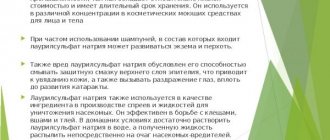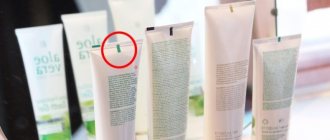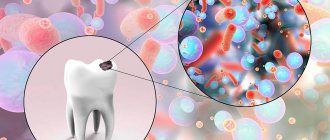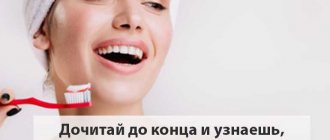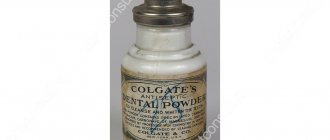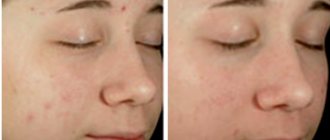Our children are very inquisitive and curious. They explore the world and try to taste everything. Unfortunately, children's curiosity and parental inattention often become a harbinger of trouble - poisoning in a child.
If medicines, cosmetics or household chemicals are stored at home in a place accessible to children, the child may try them, tempted by the bright packaging or delicious smell. Alas, often the result of such a “tasting” can be poisoning of a child.
Danger awaits children in the lap of nature: fragrant flowers, berries, bright mushroom caps also cause poisoning of children who eat this “beauty.”
Food poisoning in a child occurs when eating poor-quality food or products contaminated with microorganisms or fungi.
Mass poisonings, such as salmonellosis, also occur in children's groups.
In adolescence, there is a desire to “try everything” - toxic substances, medications, and sometimes drugs. Such experiments often end in acute poisoning of the child or substance abuse (drug addiction).
Poisoning in a child is divided into periods:
- asymptomatic period - the time from the moment a toxic substance enters the body until the initial manifestations of poisoning (fever, vomiting, diarrhea);
- intoxication is the period from the moment when the poison has already been absorbed into the blood until the toxic substance is completely removed from the body. It is at this stage that it is important to provide timely and correct assistance to the child. Otherwise, dysfunction of various internal organs and the brain is possible.
After poisoning, a child may experience insidious consequences - complications: kidney or liver failure, disorders of the nervous system, heart, lungs.
After food poisoning, the functioning of internal organs is restored. The duration of the period depends on the severity of intoxication, timeliness of treatment and concomitant diseases of the child.
Signs of poisoning
Doctors regard a sudden deterioration in the child’s health – vomiting and diarrhea – as possible poisoning of children.
However, the symptoms in a child depend not only on the body’s “desire” to remove the poison, but also on the toxic properties of the substance itself that is ingested:
- vomiting without diarrhea may be a sign of nicotine poisoning;
- dilation of the pupils occurs with alcohol poisoning;
- nystagmus or strabismus - in case of fly agaric poisoning;
- constricted pupils are a sign of opiate poisoning;
- impaired color perception - carbon monoxide poisoning;
- paralysis, double vision - symptoms of botulism;
- blindness - methyl alcohol poisoning;
- diarrhea, abdominal pain and vomiting accompany food poisoning. When food is contaminated with bacteria, the temperature rises. In case of poisoning, a child experiences headache, drowsiness, and poor appetite.
How to treat poisoning in a child?
Therapy consists of main areas:
- Prevent the absorption of poison into the blood;
- Application of an antidote (antidote);
- Removing toxic compounds from the body;
- Treatment of symptoms of poisoning.
Difficulties in treating children under one year of age are associated with insufficient function of the kidneys and liver, the organs responsible for neutralizing toxins and removing them from the body.
It is important to know
Regardless of the type of plant poison, it is necessary to begin treating poisoning in children with gastric lavage.
The volume of water required for rinsing: 3 years - 6 years: take 16 ml of water per kilogram of child’s weight, 7 years and older - 14 ml per kilogram of weight. After emptying the stomach of food debris, give the child Enterosgel sorbent.
Poisoning in children should be treated as quickly as possible. Before the doctor arrives, it is necessary to compensate for the fluid lost through vomiting and diarrhea - to give the baby a drink. This will also quickly remove toxins from the body. Drinks are given a few teaspoons every 5-10 minutes.
Pharmaceutical solutions (rehydron and others), boiled water, carrot-rice or raisin infusions are used.
Fever in case of poisoning in a child is eliminated by taking antipyretic drugs.
If the baby is breastfed, in addition to milk, you should give him boiled water. And after some time after food poisoning, you can return to your normal feeding regimen.
Food poisoning in a child with mushrooms, poisonous plants, and chemicals is treated in a hospital setting.
Why is it important to care for baby teeth?
There is a common misconception that caring for baby teeth is not necessary. After all, these teeth are not forever, and new “real” ones will soon grow to replace them. But in fact, you should start taking care of the health of permanent teeth long before they appear.
The health of future molars directly depends on the condition of the milk teeth, because their rudiments do not appear out of nowhere - they are already located under the milk teeth.
Temporary teeth influence the formation of the correct bite of permanent teeth. For example, if a baby tooth becomes inflamed, it may be delayed in falling out and spoil the growth of the permanent tooth, and if it is pulled out prematurely, the permanent tooth may grow crooked.
In addition, the early habit of caring for teeth, when they are still baby teeth, will ensure the child’s health for many years.
Diet for poisoning in a child
You need to start diet therapy with fasting. A child under 1 year of age who is breastfed misses several feedings. For older children, food is offered after the vomiting disappears.
What to feed a child if he is poisoned?
Food should be gentle on the stomach and intestines - this is a mandatory requirement for dietary dishes.
Pediatricians know what to feed a child in case of poisoning in order to provide the body with nutrients and enable it to recover from intoxication. Children who previously received complementary foods are given rice or buckwheat porridge prepared with milk and water in equal proportions. The porridge is pureed and diluted with hot milk. After a few days, you can give pureed vegetables. After 3-4 days - baby cottage cheese. Gradually, fish and meat are introduced into the diet in the form of a soufflé.
Children over one year old can be given biokefir or bioyogurt: they will ensure the restoration of the microflora of the large intestine after intoxication. The diet is expanding faster. Soups, purees, meat, fish, cereals are rubbed through a sieve.
What can a child eat if he is poisoned while vomiting?
To maintain water-salt balance, the baby should be given tea, rosehip decoction, salted or mineral water, and dried fruit compote. Feed only after vomiting has stopped.
Pediatrician Komarovsky believes that you should not force feed a child. Dishes on the children's menu should contain vitamins and be easy to digest, and drinks should be rich.
What can you eat if you are poisoned during diarrhea?
The menu should not include products that have a laxative effect and increase gas formation. During this period you cannot: baked goods, whole milk, brown bread.
Depending on the diagnosis, main symptoms, and diet treatment may vary significantly. In some cases, therapeutic fasting is recommended. After it, homemade crackers, oatmeal and rice porridge are gradually introduced. The first day the baby is fed often in small portions.
- What is allowed to eat? You can have mashed potatoes, rice porridge, white crackers, tea.
- What is strictly prohibited: fresh baked goods, pasta, chocolate, ice cream, chips.
The diet should be followed for about two weeks, then the child gradually returns to the regular menu.
What to do if a child ate adult toothpaste?
If a baby decides to eat toothpaste, not for children, but for adults, then the likelihood of poisoning in this case increases. After all, adult toothpaste contains many, to put it mildly, substances that are unhealthy for a child’s body, which, if swallowed and enter the stomach, can cause poisoning. One of these substances is fluoride, which is not found in baby toothpaste. And of course, the degree of likelihood of poisoning in this case will greatly depend on the volume eaten.
As for the algorithm of your actions, it will be the same as described above. Drink plenty of fluids, treat symptoms of either poisoning or allergies, and call an ambulance if complaints occur.
Don't worry, watch your child and stay healthy.
What to feed a child after poisoning?
Dishes are warm, pureed or served in crushed form - rubbed through a sieve or processed in a blender.
What can you eat after poisoning? Ready-made baby products are perfect for this: meat and fish soufflés, vegetable purees, porridge or home-cooked boiled or steamed dishes. On the contrary, you should exclude: cucumbers, tomatoes, cabbage, wheat, pearl barley porridge.
What can you eat after a period of intoxication? During the recovery period, the menu consists of: boiled chicken meat, buckwheat porridge, natural yogurt, low-fat fish, kefir.
Diet period - 2-3 weeks from the moment of poisoning in children.
Treatment at home with the help of dietary nutrition will help to avoid chronic diseases of the digestive system and other complications.
Now let's talk about what to do while you are waiting for the doctor. So…
A child ate toothpaste, what should I do?
At first, my husband and I were glad that Maksimka ran to the bathroom every day, morning and evening, without persuasion, to brush his teeth. We thought that this was the result of our pedagogical work, we bought a book “why a child needs to brush his teeth,” an interesting one with bright pictures, a toothbrush with his favorite cartoon character, and toothpaste, of course for children, with strawberry flavor. But recently we began to notice that the tube of children’s toothpaste runs out too quickly. We couldn’t even think about the fact that the child ate toothpaste. Well, why, because there is always fruit, cookies or candy at home, why does he need toothpaste?
They didn’t wonder for a long time, but one day they took it and asked him directly, he, of course, said that no, he didn’t eat it, he didn’t touch it, but his eyes shifted suspiciously, and then everything became clear to me...
First aid for child poisoning
Parents should be able to provide first aid to their child in case of poisoning before the ambulance arrives. This will help prevent the absorption of the toxic substance and reduce intoxication.
In case of poisoning with mushrooms, berries or medications, it is necessary to induce vomiting in the child by pressing on the root of the tongue. Rinse the stomach with a warm solution of table salt (2 - 4 teaspoons of salt per 1 glass of water) until the rinsing water is clean. The volume of liquid for gastric lavage should not be more than 3 liters.
What to give a child if he is poisoned?
After gastric lavage, enterosorbents are introduced inside to absorb the remaining poison.
They should be used as first aid for any food poisoning! But at the same time, it is necessary to know the permissible dosages and the preferred dosage form of the sorbent. For example, traditional activated carbon can damage the stomach lining of young children.
Modern silicon-containing sorbents (for example, Enterosgel) have high sorption activity, are available in gel form and are successfully used in pediatrics. Enterosgel absorbs not only pathogenic bacterial cells, but also their toxins, secondary mediators of inflammation, does not linger in the digestive system, is not absorbed, is suitable for long-term therapy and does not stain the stool, which is especially important during diagnosis.
Toothpastes with calcium and phosphorus
Therapeutic and prophylactic toothpastes with calcium and phosphorus are the basis for the prevention of caries and its complications. Most often, parents use these toothpastes, which help saturate the enamel and strengthen it.
Children's toothpastes taste good, and some children may swallow or even eat them. Is it dangerous? Phosphorus and calcium in toothpaste are safe for children; they are easily excreted by the kidneys in full. Other components of toothpaste are also completely bound and eliminated by the body. Swallowing toothpaste by children is safe, but this does not mean that toothpaste can be eaten without stopping children from swallowing toothpaste.
How to take Enterosgel for children?
Children are recommended to take Enterosgel 3 times a day:
- 5 – 14 years – dessert spoon;
- 2 years - 5 years - tea.
- In case of severe acute poisoning, doctors allow a dosage to be doubled.
Enterosgel should be in every home medicine cabinet, especially in summer!
A few hours later, already in the hospital, the doctors repeat gastric lavage for the child, after which they give a saline laxative (magnesium sulfate in a dose of 15 - 20 g in 100 ml of water).
If the cause of intoxication is reliably known - in the early period of poisoning, antidote therapy is carried out - an antidote is introduced into the body. For example, ethyl alcohol is used for wood alcohol poisoning, the mushroom venom of the toadstool is neutralized with lipoic acid, and for poisonous snake bites, a specific anti-snake serum is administered.
Removal of poison absorbed into the blood is carried out using forced diuresis (administration of fluids during diuretic therapy), hemosorption, plasmapheresis, hemodialysis.
In case of violations of the vital functions of the body, treatment of convulsive syndrome, a complex of anti-shock measures, etc. are carried out.
How to avoid poisoning?
- The child should be taught to wash his hands after visiting the toilet and before eating. Eat only washed vegetables and fruits;
- parents follow the rules for storing and preparing food;
- you cannot buy products of dubious quality in spontaneous markets and stores;
- you should not cook for future use in the summer months;
- when bathing children in ponds, it is worth remembering that pathogens of intestinal infections can live there;
- do not allow children to pick berries and mushrooms without adult supervision;
- do not feed mushroom dishes to children under 7 years of age;
- Medicines and various chemicals must be stored exclusively out of the reach of children.
Health to you and your child!


